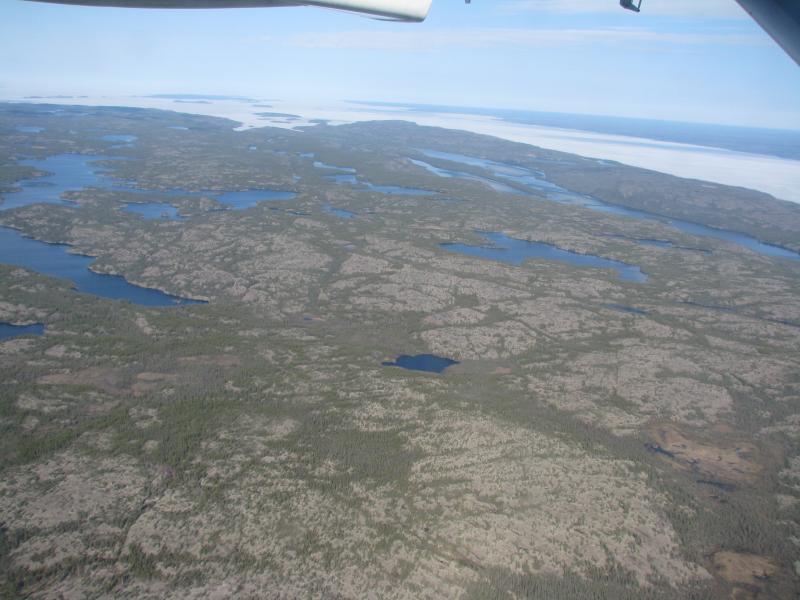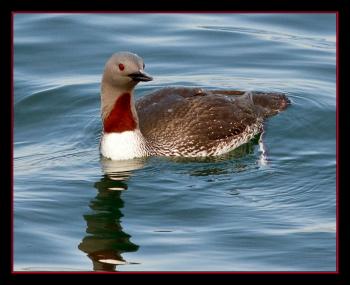A Gift from Lutsel K’e
Some readers may remember a column we wrote last year about an Indigenous leader named Florence Catholique from the Northwest Territories in Canada who had spent two days traveling to reach the Audubon Camp at Hog Island in Bremen, Maine.
This week her tiny First Nation community called Lutsel K’e, nestled along the shore of one of the world’s largest lakes, Great Slave Lake, gave the world a massive gift. That gift was the permanent final establishment of a new Indigenous Protected Area called Thaidene Nene that encompasses a landscape of astonishing size: more than six million acres.
Try to think of the largest protected area that you know. Is it Baxter State Park? Thaidene Nene is more than 25 times larger. Yellowstone National Park? This is more than twice the size of that iconic park. It’s more than seven times the size of Rhode Island and more than three and half times the land area of Delaware.
That is big.
In fact, it is one of the largest land protection actions in recent history.
Thaidene Nene means, in the Indigenous language, “land of the ancestors,” acknowledging the thousands of years that the Indigenous people of this region survived and thrived on the land as they do now.
These newly protected lands also support ten million or more breeding birds, most of which migrate south to winter from southern Canada and the U.S. south to southern South America. Undoubtedly, some of those birds end up migrating through or wintering right here in Maine.
Within Thaidene Nene, the shores and cliffs overlooking the East Arm of Great Slave Lake hold the nests of ospreys, bald eagles and peregrine falcons. Small islands and lakes throughout the region host nesting common and red-throated Loons, surf and white-winged scoters, Arctic terns, and occasional parasitic jaegers. The vast landscape of forests, wetlands, shrublands, and peatlands across the millions of acres of Thaidene Nene ring each summer with the songs of breeding olive-sided flycatchers, hermit thrushes, Lincoln’s sparrows, Harris’s sparrows, Smith’s longspurs, blackpoll warblers, Tennessee warblers, palm warblers, northern waterthrushes, yellow warblers, common redpolls, rusty blackbirds, and many more. Thousands of loons, grebes, sandpipers, ducks, geese, and swans flock here each spring and fall, making it an important region for waterbirds, shorebirds, and waterfowl.
And thanks to the leadership of the Lutsel K’e Dene First Nation, ten million or more birds will never face the prospect of returning North in the spring from their wintering grounds thousands of miles distant, to find their habitats destroyed or degraded by industrial activities like mining and its spider web of related infrastructure.
The Lutsel K’e Dene First Nation has been working for many years with both the Government of the Northwest Territories and the federal government to enshrine Thaidene Nene as an interconnected protected area consisting of a national park reserve, a territorial park, and a specially managed wildlife conservation area. The announcement and signing ceremony this week now makes those designations official, along with the First Nation’s designation under Indigenous law of the area as an Indigenous Protected and Conserved Area. In an exciting new model, the Lutsel K’e Dene First Nation will be managing Thaidene Nene in equal partnership with both the federal and territorial governments.
We all should be thanking the people of the Lutsel K’e Dene First Nation for showing us a creative, positive path forward as the world wrestles with problems of climate change, biodiversity loss, and social justice.
Thank you, Lutsel K’e Dene First Nation!
Jeffrey V. Wells, Ph.D., is a Fellow of the Cornell Lab of Ornithology and Vice President of Boreal Conservation for National Audubon. Dr. Wells is one of the nation's leading bird experts and conservation biologists and author of “Birder’s Conservation Handbook”. His grandfather, the late John Chase, was a columnist for the Boothbay Register for many years. Allison Childs Wells, formerly of the Cornell Lab of Ornithology, is a senior director at the Natural Resources Council of Maine, a nonprofit membership organization working statewide to protect the nature of Maine. Both are widely published natural history writers and are the authors of the book, “Maine’s Favorite Birds” and “Birds of Aruba, Bonaire, and Curaçao: A Site and Field Guide” from Cornell Press.
































